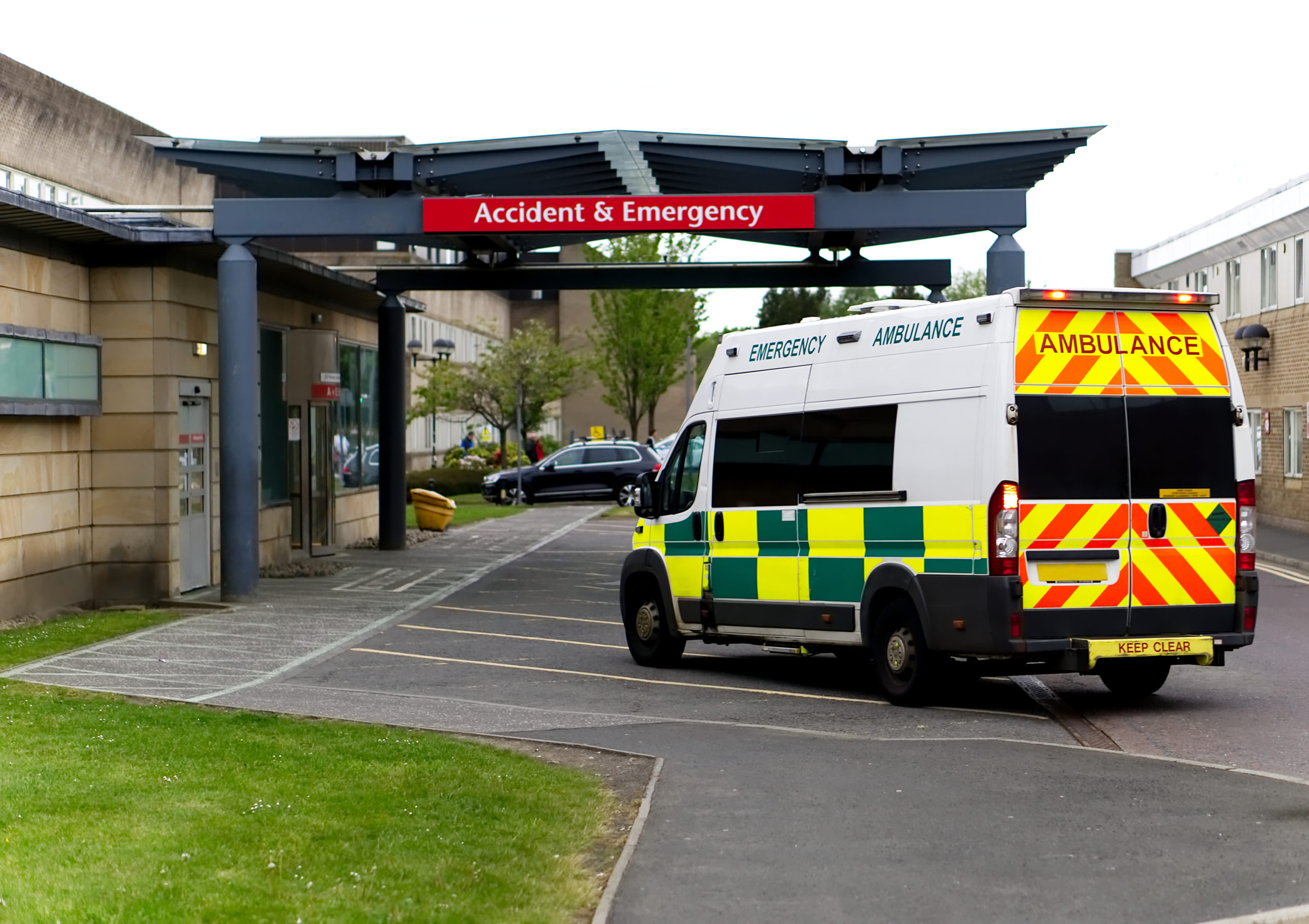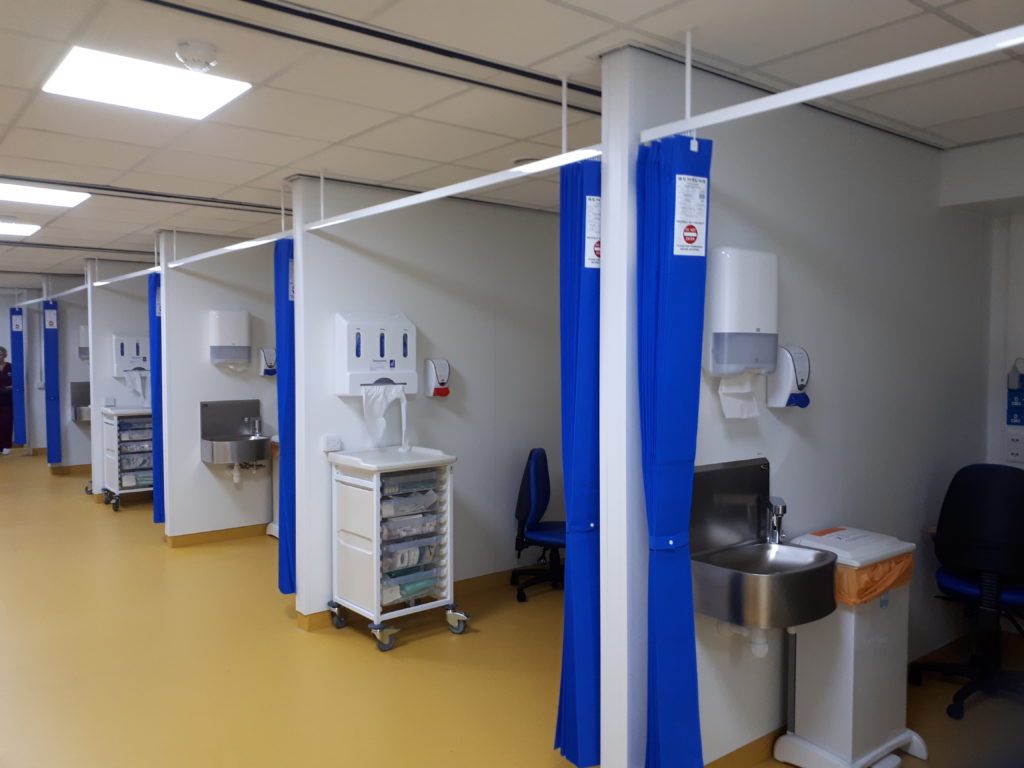Alleviating A&E pressures with flexible healthcare infrastructure

Lindsay Dransfield, Group Commercial Director at Vanguard Healthcare Solutions, illustrates how to streamline patient flow and reduce demand on A&E departments.
A&E attendances are rising again, and the worry is that a second wave could overwhelm this winter season. The new model for making appointments that the Government is trialling in an effort to alleviate A&E pressures, should reduce demand and waiting times for emergency cases, but a wider approach to improving patient flow is required.
Patients being diverted from A&E with less urgent cases will need to be cared for somewhere. An on-site minor injuries unit (MIU) or urgent treatment centre (UTC) could help reduce pressure in the short to medium term, and add vital extra capacity for treating patients.
Rising demand
The story of growing pressure on emergency departments is not a new one, but the scale of the problem has massively increased over time, culminating in a peak during last winter. Over the last five years, attendances at major A&E departments in general hospitals have risen by more than 10 per cent, with the rise between 2018 and 2019 the most significant at 4.9 per cent.
With bed occupancy at over 90 per cent nationally, many facilities were at maximum capacity before the pandemic, so flexibility in the system to cope with sudden surges in demand was already limited. What’s more, the latest data emergency care data shows a 96 per cent bed occupancy on October 1.
Rising demand in combination with limited, and reducing, capacity has also led to waiting times increasing substantially over time. Nationally, 23.8 per cent of patients in major A&E departments waited more than four hours last year, compared with 18.6 per cent in 2018 and 8.5 per cent in 2014, while the NHS is facing similar pressures in Scotland and Wales.
This is now an urgent issue. Overcrowding can mean a higher risk of transmitting the virus, and the need for separating infected patients is adding to the immediate pressure. Whatever the metric used to measure A&E performance, it’s clear that the situation going into the winter season is less than ideal.
A wider issue
Covid aside, underlying healthcare demand is unlikely to dampen anytime soon. Increasing long term capacity in the form of more ward space and newbuild hospitals will be crucial.
Urgent and emergency care services were already striving for more simplified and integrated systems to improve patient flow. As well as streaming in A&E, there were also plans to implement online triage, increase access to out-of-hours GPs and develop UTCs in order to encourage non-urgent patients to seek alternative services.
Covid-19 is accelerating the pace of change. Given the current situation, A&E is unlikely to be the most suitable place for patients with certain conditions. These patients may benefit from being redirected to a more appropriate service, reducing waits and lowering risk.
The new scheme, which involves NHS 111 workers directing patients to the most clinically appropriate service, should reduce crowding in waiting rooms and cut unnecessary A&E attendances. But, while diverting people away can improve patient flows, it can also provide challenges in terms of physical space and capacity across other parts of the healthcare system. The people diverted away from A&E departments will need to be treated somewhere.
To accommodate a change in use, existing facilities may need to be upgraded or, in some cases, transformed. The Government’s announcement that it was investing £450 million to prepare A&E departments for winter, was a welcome one. But the question is how far this will go, and how quickly measures can be implemented ahead of the winter season.
Improving patient flow
The success of MIUs in the community has been mixed with many offering limited opening hours and access to key services, such as X-ray, which resulted in low patient numbers. There has also been some confusion among the general public about the options available, causing avoidable visits to A&E and other parts of the urgent and emergency care system.
Co-location can provide a solution to these issues. Creating a co-located MIU or UTC at the same site as the A&E department allows hospitals to share resources within the site and patients to be treated in the most suitable environment, leading to reduced waiting times and more effective patient flow. A reduction in onward pressure on in-patient beds is also possible, as when patients are seen and treated quicker, they do not become a “breach” concern and so are less likely to be allocated a bed.
But even with additional funding, for many hospitals, adding capacity in the form of a new building or a permanent extension can be difficult due to site restrictions. In addition, the reorganisation of an emergency department or the construction of an MIU or UTC unit can take time. A co-located mobile or modular MIU or UTC can be quickly set up adjacent to an existing A&E department to relieve immediate pressure. By using a temporary solution, a new way of working can be achieved very quickly while a more permanent reconfiguration is taking place.
A positive impact
A number of hospitals have successfully introduced a co-located MIU or UTC, including the Royal Infirmary of Edinburgh, which set up an MIU in 2019. The hospital’s management found that people were waiting in A&E for treatment for conditions which could be treated elsewhere in the healthcare system, placing the department under pressure and leading to longer waiting times for patients.

NHS Lothian wanted to help more people to be treated quickly, effectively, and in the most comfortable environment possible, so a decision was made to create an MIU close to the hospital’s A&E department, which could treat people with less serious injuries. The resulting facility was created using a mobile laminar flow operating theatre in combination with modular buildings.
The complex provides all space needed to deliver a full MIU service, including a reception and waiting area, treatment rooms, clean and dirty utility spaces and a changing room. An important requirement was for the unit to be accessible from the existing A&E department, something which was achieved through the construction of a purpose-built walkway bringing the two departments together.
Once installed, the facility had an immediate positive impact. Within its first hour, more than 20 patients were diverted from A&E and, since opening, between 80 and 100 patients have been treated in the MIU each day for range of minor injuries such as fractures, soft tissue injuries and bites. The on-site MIU is also reducing the amount of time people are waiting to be seen, and relieving pressure on bed spaces in the main hospital.
Jim Crombie, Deputy Chief Executive and Chief Officer of Acute Services, NHS Lothian, said: “The Minor Injuries Unit at the Royal Infirmary of Edinburgh is proving to be a great addition to our unscheduled care services in NHS Lothian.
“While it makes sense for patient care, it also helps to improve patient safety by reducing the numbers of patients in the Accident and Emergency department to make sure that those with serious and life-threatening injuries and illness are given priority.”
Flexible solutions also allow hospitals to test out scenarios and prove business cases before investing significant amounts of money
Lindsay Dransfield, Group Commercial Director, Vanguard Healthcare Solutions
Flexible healthcare infrastructure
Mobile and modular temporary units can be used to provide additional clinical space on either a short- or long-term basis. The flexible nature of temporary mobile or modular MIU units means they can be modified over time as requirements and capacity change. They can also be decommissioned, moved or repurposed once a more permanent solution is in place.
Flexible solutions also allow hospitals to test out scenarios and prove business cases before investing significant amounts of money in a new or remodelled permanent building. As well as trialling new processes or working practices, the temporary unit can also be used to trial new technology, allowing hospitals to improve and futureproof systems.
However, modular solutions do not have to be temporary; modern modular builds can be completely bespoke and designed to fit seamlessly with an existing building. Installing a modular unit is much quicker than building in a traditional way – the build time for a modular unit can be reduced by almost 50 per cent – and there is less risk of adverse weather or other external factors causing delays.
An immediate need
Covid-19 is putting a system that was already stretched and under major strain. While the pandemic may accelerate the implementation of technology and new processes which could lead to a reduction in A&E attendances, underlying demand is not likely to go away.
The number of patients attending major A&E departments in general hospitals has near doubled in the past 20 years, with our ageing and fast-growing population a key factor. This patient category also uses more bed days than other people following an emergency admission.
Cutbacks in primary, community and social care have also indirectly caused an increase in preventable A&E attendances and admissions, such as those related to minor injuries, alcohol or drug intoxication, dementia and mental health, and the general shortage of beds has the potential to cause blockages elsewhere, including in A&E departments. A more permanent solution is required to adapt to the new conditions and ensure that overall capacity is able to meet projected demographic growth.
However, as we approach winter, there is not enough time to wait for long-term solutions to be implemented. There is a serious risk of overcrowding, making social distancing difficult and increasing the risk of transmission, and practical solutions need to be put in place now.
A co-located modular MIU or UTC can add flexible capacity, allowing hospitals to implement recommended changes without having to wait for major works to be undertaken or a new building. All hospitals are different, and a temporary solution provides the opportunity to test new concepts to see how it will work for them before committing to substantial investment.
Vanguard Healthcare Solutions is a leading provider of flexible healthcare solutions and has been a trusted partner to the NHS for more than 20 years.
